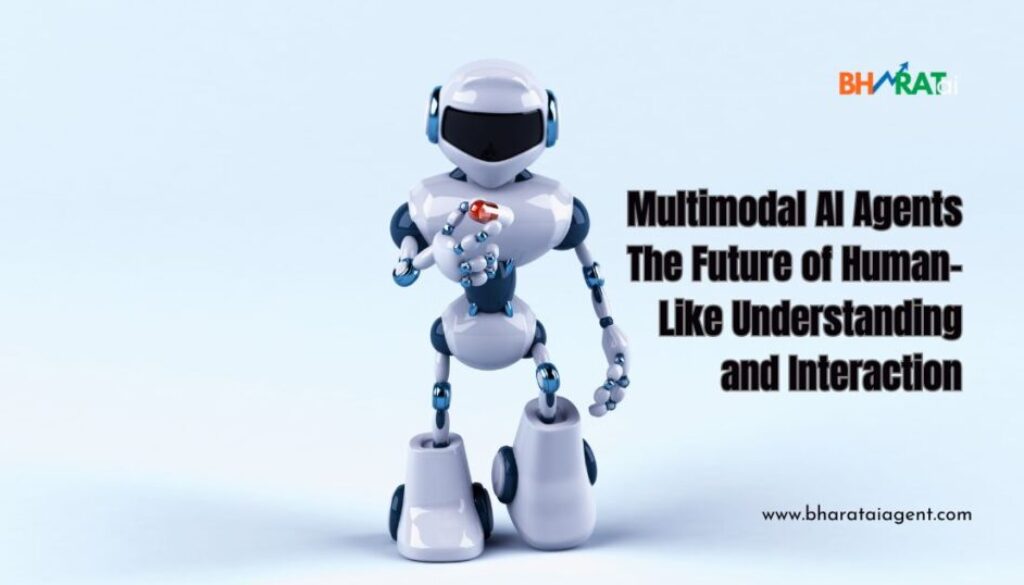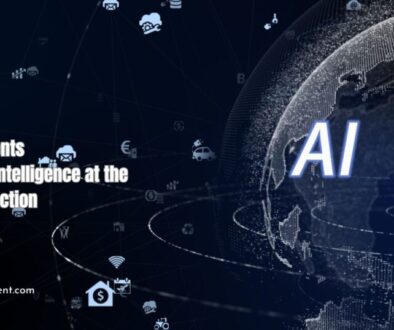Multimodal AI Agents in 2025: The Future of Human-Like Understanding and Interaction
Introduction
In the era of AI-powered transformation, Multimodal AI Agents stand out as one of the most advanced and impactful innovations of 2025. These intelligent systems process and understand multiple data types—text, voice, images, video, and sensory inputs—to deliver richer, more human-like interactions and solve complex problems more efficiently.
You’ll learn:
-
✅ What are Multimodal AI Agents?
-
✅ Key capabilities and how they work
-
✅ Real-world use cases across industries
-
✅ Benefits and latest developments (as of April 2025)
-
✅ Challenges and ethical considerations
-
✅ Future trends in multimodal AI
-
✅ Answers to common user questions (FAQs)
What Are Multimodal AI Agents?
Multimodal AI Agents are intelligent systems capable of understanding, processing, and generating outputs across multiple modes of information—such as language, audio, visual, spatial, and sensor data—simultaneously. This enables more context-aware, accurate, and fluid interactions, similar to how humans naturally perceive and respond to the world.
Unlike unimodal models (text-only or image-only), multimodal agents analyze and combine diverse inputs in real time, allowing them to perform highly complex tasks like:
-
Understanding a question asked via voice while analyzing an image
-
Generating video explanations based on a document
-
Responding to customer queries based on both product text and images
Key Capabilities of Multimodal AI Agents (2025)
✅ 1. Cross-Modal Understanding
-
Agents process inputs from multiple modalities (text, audio, images, video) to deliver coherent, unified responses.
-
Example: Understanding a support query from a customer’s voice note and accompanying screenshot.
✅ 2. Multimodal Content Generation
-
Generates outputs that span text, visuals, audio, or video—often simultaneously.
-
Example: Creating a personalized video summary of a long article, complete with subtitles and voice narration.
✅ 3. Contextual & Situational Awareness
-
Interprets not just data, but the context in which it appears (background noise, image setting, tone).
-
Example: Detects urgency in a distressed voice and prioritizes the support ticket.
✅ 4. Real-Time Multimodal Interaction
-
Enables dynamic conversations with humans via voice + image + screen interactions in real time.
-
Example: A voice assistant that visually highlights search results on a screen while responding verbally.
✅ 5. Multilingual and Multimodal Translation
-
Converts content from one mode and language to another.
-
Example: Translates a video with French narration and subtitles into Hindi with synthesized speech.
Real-World Applications of Multimodal AI Agents
🏥 Healthcare
-
AI interprets X-rays or MRIs and explains findings to doctors using natural language.
-
Visual + audio + EMR data help agents assist in diagnostics and triage decisions.
🛍️ Retail & E-commerce
-
Multimodal shopping assistants recommend products by analyzing voice input, user facial expressions, and uploaded product images.
📞 Customer Support
-
AI agents handle complex queries involving voice calls, uploaded documents, and chat inputs—providing seamless resolutions.
🎓 Education
-
Intelligent tutoring agents personalize learning by combining text materials, videos, quizzes, and voice-based feedback.
📱 Smart Devices & IoT
-
Home assistants understand voice commands, gestures, and visual cues from security cameras and sensors to take action.
🎥 Media & Content Creation
-
AI agents generate scripts, create visuals, edit videos, and add synthetic voiceovers—all in one workflow.
Latest Developments
🔗 Launch of GPT-4 Turbo Multimodal & Gemini 1.5 Pro
-
These models can process long-form text, real-time speech, visual data (charts, diagrams, photos), and live video feeds.
🧠 Fusion Models with Temporal Understanding
-
New AI agents can track, interpret, and generate time-based multimodal content, ideal for video summarization or sports analytics.
🎨 Emotionally-Aware Multimodal Agents
-
Can detect sentiment and emotional tone across voice and facial expressions, adjusting responses accordingly.
📲 Mobile & Edge-Based Deployment
-
Lightweight multimodal agents now run on mobile and wearable devices, improving accessibility and real-time decision-making.
Benefits of Using Multimodal AI Agents
-
🧠 Deeper Understanding: Combines various input types for more accurate, human-like reasoning.
-
⚡ Faster Decision-Making: Context-rich insights lead to quicker and more relevant responses.
-
🌐 More Natural Interactions: Supports intuitive, fluid user experiences across devices and platforms.
-
📈 Improved Customer Engagement: Engages users in richer, personalized ways, driving satisfaction and retention.
-
🔄 Automation of Complex Tasks: Streamlines content creation, diagnostics, analysis, and customer service workflows.
Challenges and Ethical Considerations
🔒 Data Privacy & Security
Multimodal agents often handle visual, voice, and sensitive behavioral data. Secure storage, encryption, and compliance with laws (GDPR, HIPAA) are essential.
🧠 Bias & Representation
Training data across different modalities may introduce cultural, gender, or racial biases—especially in visual and voice recognition.
🎯 Transparency & Explainability
Explaining how a multimodal agent arrived at a decision (e.g., combining image and voice cues) is still an emerging area of AI ethics.
🔧 Computational Complexity
Multimodal models are resource-intensive and require robust hardware for training and deployment—posing a barrier for small teams.
Future Trends: What’s Next for Multimodal AI Agents?
-
🔮 Generative Multimodal Agents in AR/VR: Powering real-time AI interactions in spatial computing environments.
-
🎙️ Voice + Visual Commerce Assistants: Fully AI-driven shopping experiences through visual search, voice interaction, and AR previews.
-
🧩 Inter-Agent Collaboration: Multiple multimodal agents working together across departments (e.g., one for marketing, one for operations).
-
🌍 Multimodal AI for Accessibility: Agents that convert sign language to speech, or speech to braille, transforming accessibility for disabled users.
FAQs: Multimodal AI Agents
Q1: What is a Multimodal AI Agent?
A multimodal AI agent is an AI system that understands and interacts using multiple types of input (like text, images, voice, and video) simultaneously to provide accurate and contextual responses.
Q2: How are multimodal agents different from traditional chatbots or voice assistants?
Traditional assistants are unimodal—they handle only one type of input (e.g., text or voice). Multimodal agents can analyze and generate across several input formats at once, offering deeper interaction and understanding.
Q3: Where are multimodal AI agents used in 2025?
They are widely used in healthcare, customer support, e-commerce, education, and smart homes—for tasks ranging from medical analysis to content generation.
Q4: Do I need advanced hardware to use multimodal AI agents?
Many are cloud-based or optimized for mobile and edge deployment, but training or heavy inference may require GPUs or dedicated AI hardware.
Q5: Are multimodal AI agents safe and ethical to use?
Yes—when deployed responsibly. It’s crucial to follow ethical AI practices like data transparency, informed consent, bias mitigation, and secure storage.
Conclusion
Multimodal AI Agents represent the next leap forward in human-machine interaction. They enable richer, smarter, and more intuitive workflows across industries—merging visuals, voice, and data into seamless, actionable experiences. As these agents become more affordable and accessible, the potential for innovation and impact is only just beginning.
#MultimodalAI #AIAgents #AI2025 #VoiceAI #GPT4Turbo #AIInnovation #HumanComputerInteraction #AIUX #FutureOfAI #AIforBusiness #GenerativeAI #TechTrends
Multimodal AI Agents 2025
AI across text and vision
Voice + image AI
GPT-4 Turbo multimodal
Multimodal chatbot
Human-like AI interaction
Visual understanding AI
Multimodal content generation
AI for customer engagement
AI agents for healthcare
AI that understands voice and images
Generative multimodal AI
NLP and vision AI agents
Future of AI assistants
Conversational AI with images
Multimodal translation AI
Multimodal content generation tools
Emotionally aware AI agents
Cross-platform AI experience
Smart assistants in 2025




